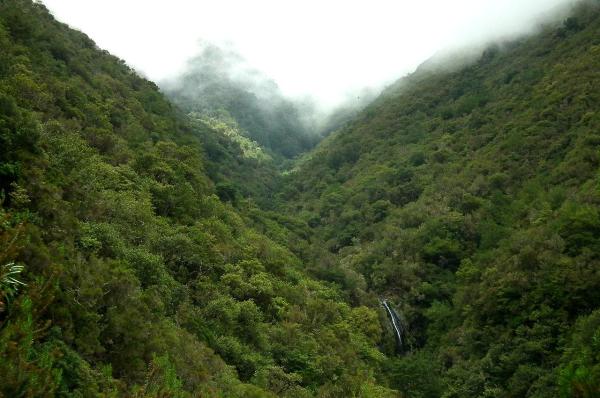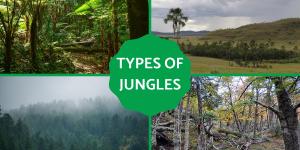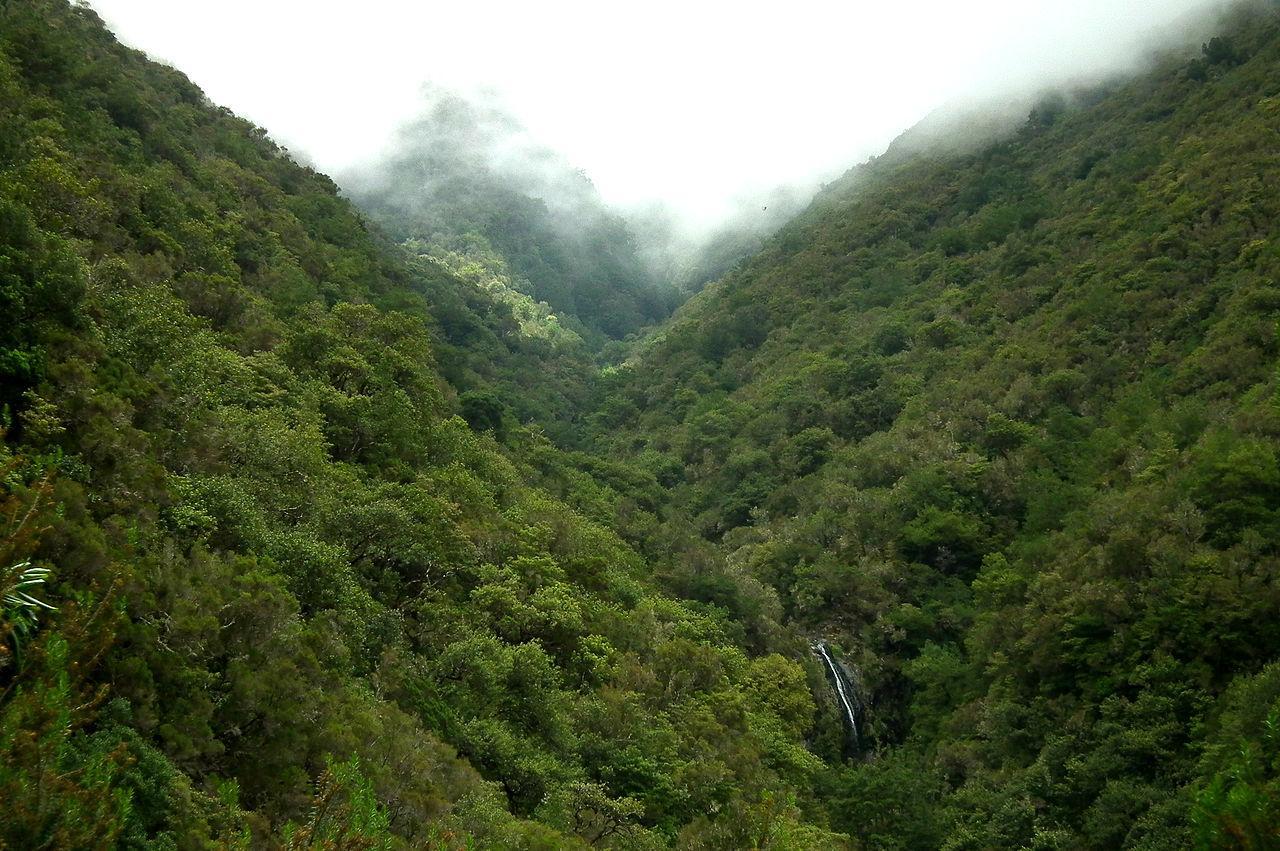Laurel Forest Definition and Examples


Also known as laurisilva, laurel forests are subtropical forests known for high humidity and broadleaf tree species. While their name comes from the trees which constitute the Lauraceae family of plants, not all laurel forests will contain laurel trees. However, the trees which inhabit laurel forests are often similar due to their evergreen nature and large leaves. Although laurel forests do not have the widest distribution, some of them constitute cloud forests due to their altitude. At thedailyECO we provide a laurel forest definition with examples so you can know more about this particular ecosystem.
What is a laurel forest?
Coined by the Swiss phytogeographer Eduard Rübel, the definition of a laurel forest is a heterogeneous ecosystem made up of humid, leafy and thick, evergreen forests formed by trees with lauroid-type leaves. These are tree species with perennial leaves of medium size and are lustrous, similar to that of laurel trees. It is easy to confuse laurels with these similar trees.
Laurisilva originally occupied a large part of the planet, but today they only have a fragmented distribution in small remnants. These laurel forests extend from Texas and Florida to the Valdivian jungles in Chile. They can also be found in Argentina, parts of Africa, Southeast Asia, Australia and New Zealand. There are representative areas of the same in archipelagos of the Azores, Madeira and Canary Islands that together with Cape Verde constitute the area known as Macaronesia.
Learn about another type of forest and how it is defined with our guide to what are thorn forests?

Characteristics of laurel forests
Now we have a basic definition of laurel forests, we can look at some of their main characteristics to better understand them:
- They can be cloud forests or subtropical montane forests typical of climates without great seasonal changes. They all have stable moderate temperatures and high humidity.
- Laurel forest form in mountainous areas where moisture comes from the oceans and precipitates in the form of rain or fog. This generates a hygrophilous environment, i.e. one where plants grow in damp conditions.
- They are heterogeneous ecosystems, since they contain a wide variety of environments and house various types of species. These are in response to environmental variations as a consequence of differences in topographical relief.
- Laurel forests are characterized by the presence of species with evergreen and lauroid foliage, i.e. laurel-type leaves. Thanks to the presence of wax and shape of the leaves that favors dripping, the leaves remain dry even when there is a high percentage of humidity.
- Their soils are covered by a thick layer of organic matter, also known as leaf litter.
- They provide shelter and food for a great range of biodiversity. There is a great wealth of endemic flora and fauna to laurisilva forests that are not found elsewhere.
- They provide important ecosystem and socioeconomic services. For example, they are valuable water producers and regulators of the hydrological cycle. They also often constitute a tourist attraction, something which has advantages and disadvantages.
- They have become a deteriorated ecosystems due to indiscriminate felling to obtain wood, intentional fires for the provision of fields for crops or pastures for cattle, the introduction of invasive exotic species, the advance of urbanization, among many other problems.
- The species that make up the laurel forest are resistant, allowing the forest to regenerate. However, their decrease is due to the continuous and deleterious pressures they experience under human influence.
Discover more about ecosystems at high altitudes with our guide to the flora and fauna of the Andean region.
Flora and fauna of laurel forests
As mentioned in the above section, laurisilva have a great biodiversity of both plants and animals. While they are defined by having tress with lauroid leaves, this does not mean they do not also contain many other plant and animal species:
Flora of laurel forests
Trees with lauroid-type leaves have leaves which are wide, ovate, leathery and glossy. Only a few species from laurel forests belong to the laurel family, although most of them resemble this species in appearance.
Many of the flora species are pollinated by insects (entomophilous), except for some exceptions in which pollination is through the wind (anemophilous). The most important species come from the genera Laurus, Ilex, Myrica, Ocotea, Picconia and Persea, among many others. They bear fruit throughout the year with no apparent phenology because they are not subject to climate seasonality and offer a great diversity of fruits to birds and other species. animal species.
As it is a very humid cloud forest, there is a great variety of lianas and epiphytic plants. These include many different types of bryophytes that form large hanging curtains. They also include other non-vascular plants such as ferns, mosses and lichens.
Fauna of laurel forests
The most abundant animals in the laurel forest are invertebrates, with insects being some of the most important. The humidity and shade of this ecosystem also favor the presence of earthworms, mollusks and arachnids.
As for vertebrate animals, birds are the ones with the greatest abundance, along with some amphibians and reptiles. Among the endemic species we find the Bolle's pigeon (Columba bollii) and the laurel pigeon (Columba junoniae) which can be found on the Canary Islands, as well as a reptile called the La Gomera giant lizard (Gallotia bravoana). Some small mammals also appear, such as the Canarian shrew (Crocidura canariensis).

Examples of laurel forests
We already know that the distribution of laurel forests is limited. However, there are some examples of laurel forests we can see in subtropical and tropical regions, including:
- Laurel forests of Macaronesia: the first World Biosphere Reserve of the Canary Islands and a UNESCO heritage site was created on the island of La Palma with the aim of conserving the ecosystem of the Macaronesian laurel forest. In the center of the island of La Gomera within the Garajonay National Park is one of the largest remnants of laurel forest. In Macaronesia, within the Parque Natural de las Nieves, you can visit wonderful places entering the laurisilva of the palm, such as the Bosque de Los Tilos and the waterfall that lies there.
- Valdivian laurel-leaved forests: making part of a range of different types of forests through the south of the American continent in southern Chile and Argentina. It is characterized by having evergreen forests of various strata. Due to the isolating presence of the Andes mountain range and the Pacific Ocean, it is considered a biogeographic island. It presents a high number of endemic species and is one of the most biodiverse places on the planet.
- Laurel forests of Australia, New Caledonia and New Zealand: present in oceanic mountainous fringes, the laurel forests of Australia, New Caledonia and New Zealand have a large number of species related to those of the Valdivian laurel forest.
- African laurel forests: in Africa, laurisilva is found mainly in the Montes de Cristal forest region of Gabon, on the west coast of the African continent.
Now you know the definition of laurel forests with examples, you may be interested to know about other types of forest. A good place to start is to learn about what are primary forests and what are secondary forests?
If you want to read similar articles to Laurel Forest Definition and Examples, we recommend you visit our Ecosystems category.
- Fernández, A. B., & Gómez, L. (2016). What are the ancient laurel forests. Its value and situation in the Canary Islands.
- Martínez, J. M. F. P., Sierra, J. R. A., Delgado, G. G., García, J. D. D., & Otto, R. (2004). Laurisilva regeneration strategies.







